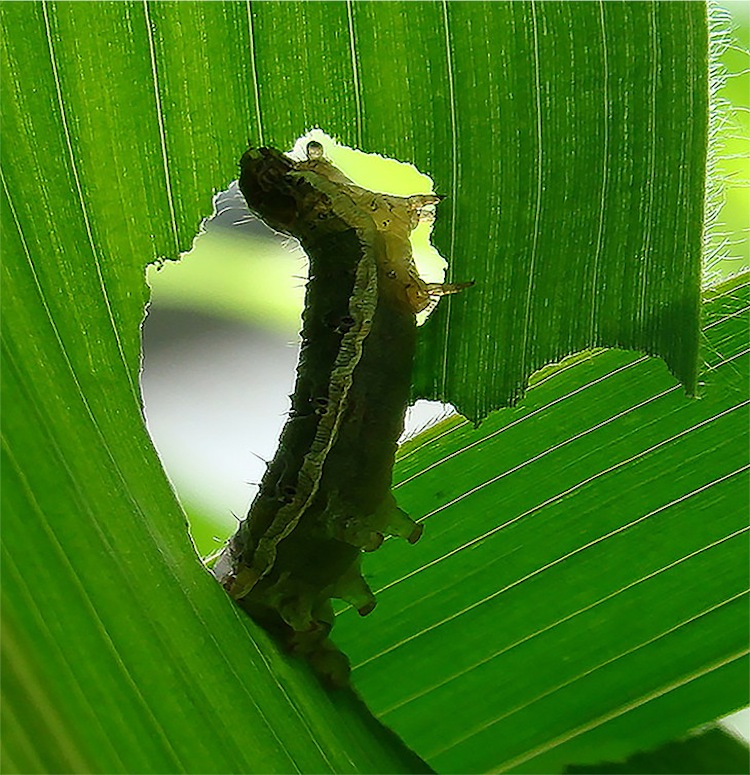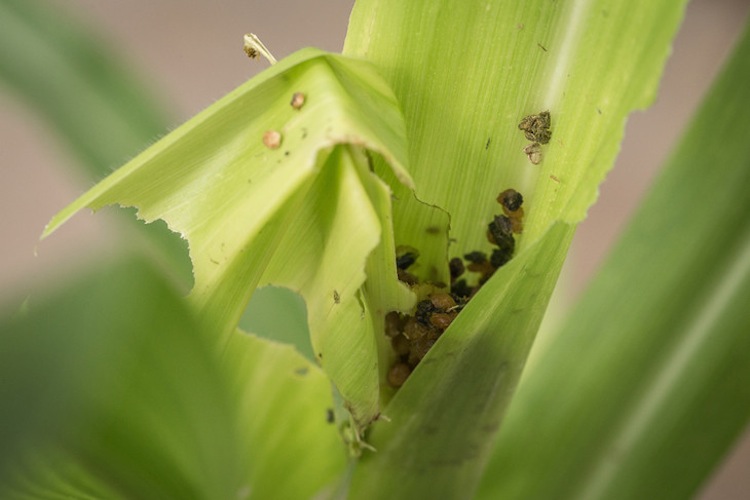Leaf-Eating Caterpillars Use Their Poop to Trick Plants

Caterpillars that munch on corn leaves have developed a clever way to get the most nutrients from their meals: They use their poop to trick the plants into lowering their defenses.
Scientists at Pennsylvania State University recently discovered that fall armyworm caterpillars (Spodoptera frugiperda) can send chemical signals to plants through their poop, or frass.
"It turns out that the caterpillar frass tricks the plant into sensing that it is being attacked by fungal pathogens," study co-author Dawn Luthe, a professor of plant stress biology at Pennsylvania State University, said in a statement. [In Photos: Animals That Mimic Plants]
Corn plants can deal with only one kind of attack at a time, so while a corn plant is dealing with the perceived "fungal infection," the caterpillar is left to feast on the plant's leaves. Normally, a plant will recognize chemical signatures from insect secretions, which helps the plant know when to raise its defenses. In many cases, this includes producing a biochemical that repels herbivores, such as insects.
But chemical signals from the caterpillar's poop act as crafty diversions, the researchers said.
"The plant perceives that it is being attacked by a pathogen and not an insect, so it turns on its defenses against pathogens, leaving the caterpillar free to continue feeding on the plant," Swayamjit Ray, a doctoral student in plant biology at Penn State and co-author of the paper, said in a statement. "It is an ecological strategy that has been perfected over thousands of years of evolution."
Caterpillars usually feed on the leaves in the confined whorls of corn plants. The critters typically defecate in the crevasses where the leaves meet the stalk, the researchers said.
Get the world’s most fascinating discoveries delivered straight to your inbox.
Scientists studied the biochemical relationship between fall armyworm caterpillar frass and a plant's defensive mechanisms by performing two tests. In the first test, the scientists applied frass extract to the leaves of some corn plants and compared caterpillar growth of those that fed on treated leaves with those that munched on untreated leaves.
The second test involved measuring how frass-treated corn leaves affected defensive performance on plants exposed to a fungal pathogen — in this case, spores of a fungus that causes blight in corn (Cochliobolus heterostrophus). The scientists observed that, initially, proteins in the frass activated an insect defense in the plant, but over time, as the corn plants were exposed to more of the protein, the plants' defenses became altered and instead began to recognize the frass protein as a fungal pathogen instead of an insect waste product. This caused the plant to defend itself against what it saw as a fungal threat instead of an insect threat.
While this may not be good news for plants suffering from a caterpillar infestation, the researchers think it may be possible to isolate the specific components in caterpillar poop that heighten a plant's defenses against pathogens. If this is the case, the scientists said, farmers could one day develop an organic and sustainable pesticide to prevent infection and disease in crops.
The findings were published online Aug. 26 in the Journal of Chemical Ecology.
Follow Elizabeth Newbern @liznewbern. Follow Live Science @livescience, Facebook & Google+. Original article on Live Science.



